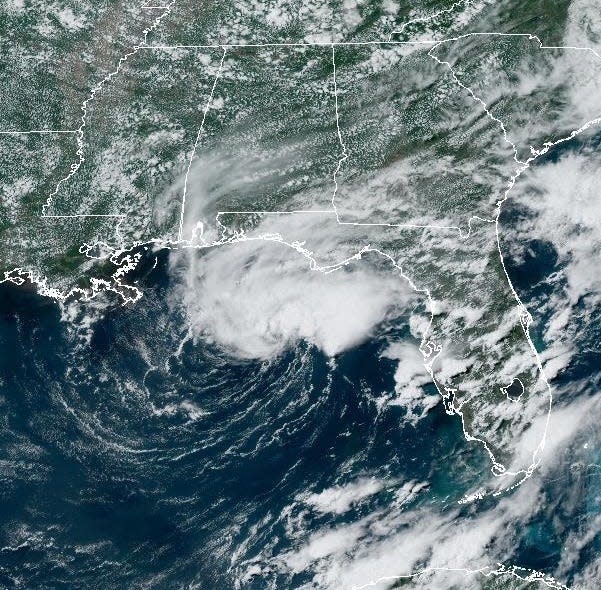Here's what New Jersey can expect for Hurricane Season
The National Oceanic and Atmospheric Administration (NOAA) has released its predictions for the 2023 hurricane season.
The season officially started June 1 and lasts through Nov. 30. Every year, before the season begins, NOAA releases their predictions, which include whether the season will be average, above average, or below average in terms of the number and intensity of storms.
For 2023, NOAA is predicting a relatively average season with a 40% chance of an average hurricane season, a 30% chance of a below-average hurricane season, and a 30% chance of an above-average hurricane season.
► NJ Sandy, Ida victims, still reeling from storms, demand help from legislators
► Are NJ beaches prepared for hurricane season? Officials say yes, but vulnerabilities remain
► Climate change is bad for everyone. But this is where it's expected to be worst in the US.
That's down from the 2022 forecast which predicted a 65% chance of an above-average season.
NOAA predicts between 12 and 17 named storms this year.
Tropical storms are named when wind speeds reach 39 mph. They predict five to nine hurricanes, meaning wind speeds at 74 mph. Finally, they predict one to four major hurricanes, meaning winds of 111 mph, or a category 3 or above hurricane.
NOAA is also predicting an El Nino to develop this summer. New Jersey’s State Climatologist David Robinson is optimistic about what this means for the upcoming hurricane season.
“We've got an El Nino event starting to develop in the tropical Pacific and that tends to reduce hurricane activity during the subsequent summer and winter and summer and fall,” Robinson said.
An El Nino event makes the hurricane season dryer for the northeast, but makes the season wetter in the southeast, resulting in greater flooding. For the last three hurricane seasons, a La Nina event has been present. This has the opposite effect as on El Nino, increasing storm activity in the northeast.

Despite the potential formation of an El Nino event, Robinson expressed some worry about the effect sea surface temperatures may have on this hurricane season.
“Sea surface temperatures are above normal and in the tropics right now.” Robinson said. “That can actually enhance storm development.”
However, Robinson said that these things don’t seem to have an effect on the frequency of storms, although there is potential for storms to last longer as they head inland.
► Tropical depression forms in Gulf of Mexico on first day of hurricane season, NHC says
► What will the hurricanes of the 2023 Atlantic season be named? Here's the list.
► Hurricane season is officially here — here are supplies you should get now ahead of a storm
“I'm concerned about storms, maintaining their strength for a longer period of time on their trek up the coast.” Robinson said. “To me, that's something I think we really have to look out for in New Jersey in the years ahead.”
Warm water is the energy source for tropical storms. When storms start going inland, they lose that energy and eventually dissipate. But the warmer the water is, the more energy they have when they hit land and can sustain for longer periods of time. This is what happened with Hurricane Sandy.
“Sandy occurred at the end of October, but sea surface temperatures off the east coast were above normal for that time of year.” Robinson said. “The storm was stronger upon landfall than it would have been with normal had the sea surface temperatures been normal.”
Despite the potential concerns for the future of hurricane seasons, Robinson says that we won’t really be able to tell how the future of tropical storms will play out in New Jersey. Hurricanes are rare events which makes it hard to study and predict their change.
But for this upcoming hurricane season, New Jersey can expect a relatively average year, and most likely a calmer season than 2022.
This article originally appeared on Asbury Park Press: NOAA hurricane center releases prediction for 2023 season
